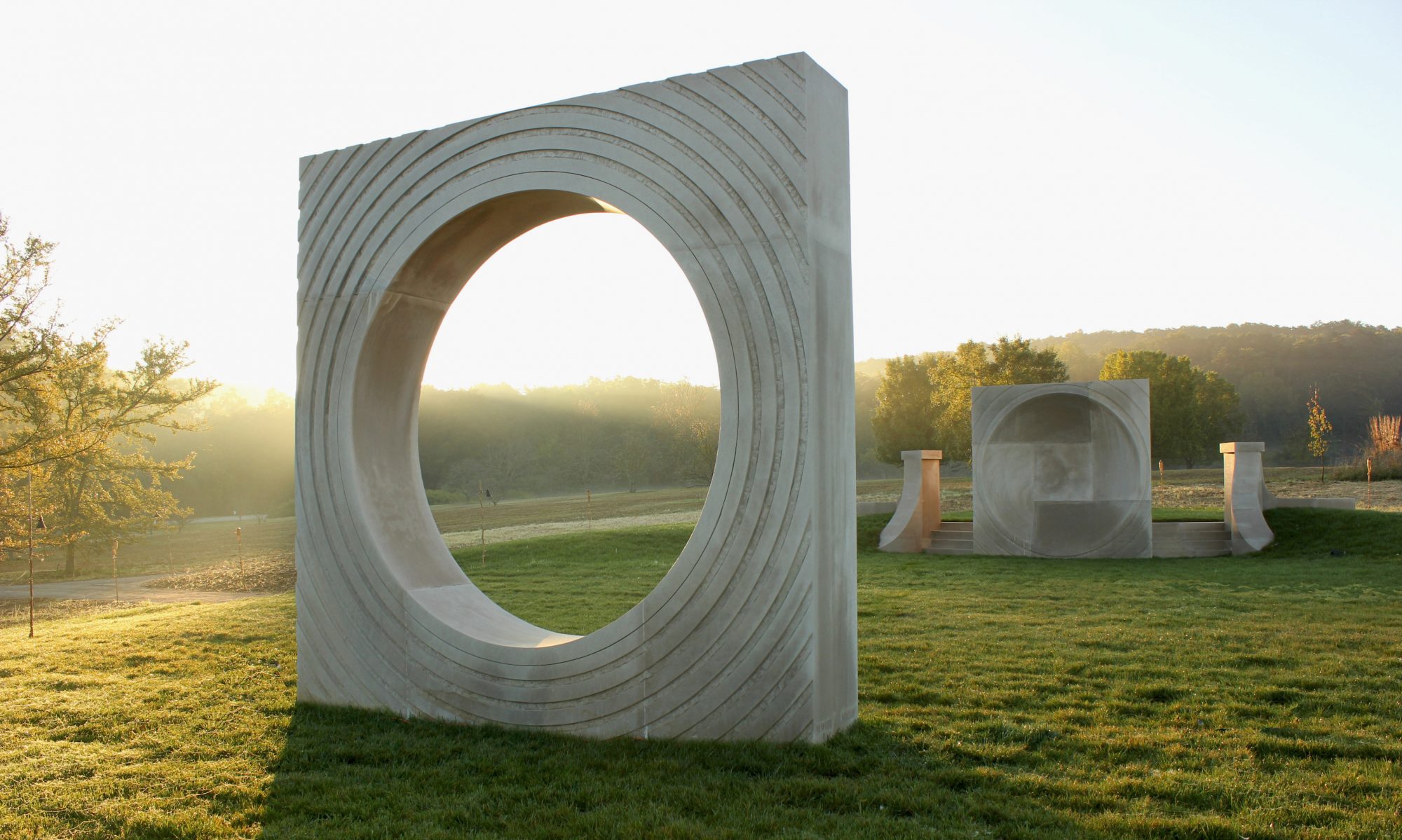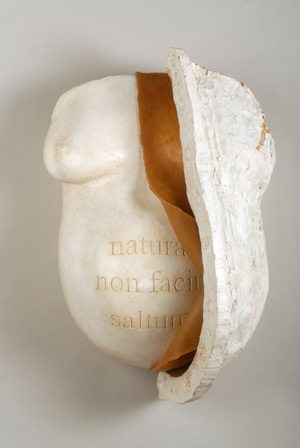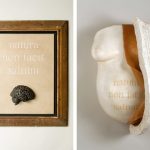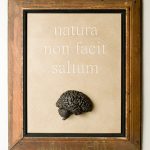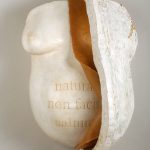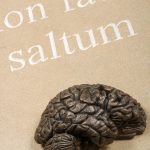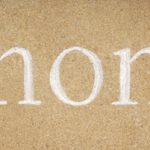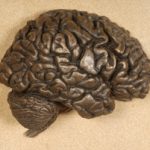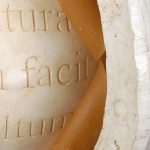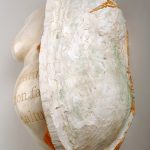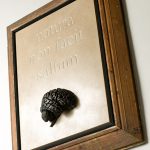Individually, these works imply seemingly disparate aspects of humanity or anthropology. The fully pregnant stomach epitomizes health, success, and rebirth. The brain echoes science and the deeper inner workings, ghost in the machine, or consciousness. The apparent synthesis of the two works is the text. In Latin, ‘natura non facit saltum’ translates; ‘nature makes no leaps.’ This means evolutionary developments are gradual among species without, relatively, any major biological leaps or differences over the 4.6 billion years of evolution on earth. Scientifically speaking I am referencing this text in regards to human nature and the evolutionary background or behavioral context thereof.
Thus, it is in nature, through the evolution of all species’ brains and the inherent purpose of nature and genes being replication, or reproduction, that these symbols explore our human place within that of all species and those shared commonalities. Through the purpose of nature, or life, the replication of the brain, the body, and the persistent drive to again replicate new amalgamations (offspring) is ultimately an expression. To replicate is an instinct within our genes. To our genes as to us, replication means the future of life and the biological equivalent of success.
Even within the awe inspiring capabilities of the human brain and its apparent distinction among our animal kingdom, there has evolved an equally profound break in the function of replication as understood in evolution. The field of ‘memetics,’ (as in genetics) represents the mental equivalent of genetic replication. Therefore, just as genes replicate themselves, so do memes. The content of the meme is an idea. Ideas such as superstitions, slogans, policies, and basic belief systems are examples. Again, like genes, some are fit or healthy to compete and reproduce, others simply dwindle into what may be compared to extinction. Furthermore, within evolutionary contexts, the brain as an evolved organ, just as the heart, liver and the reproductive organs, is a shared organ among all the planet’s so equipped species. Therefore, as with other species, as with humans, the evolution of the brain and its biological concerns are shared. I do not mean concerns simply in terms of securing resources, mates, territory, and consciousness, but fundamentally in action and behavior. In this sense the brain is like a behavioral and living fossil. This field of science was once called ‘sociobiology,’ but is now know as ‘evolutionary psychology.’
The two works of art “Reproduction” and “Time, Communication, Artifact,” I hope, may be better understood through this brief analysis. “Reproduction” is represented with the mold that was made to create the pregnant torso. In effect this mold is now rendered useless for further reproductions of this torso. However, the idea or expression of reproducing, both as the purpose of the mold and through the reproducing female body, is now conceptually fixed. “Time, Communication, Artifact,” represents another mold-based bronze casting of the human brain. Within the greater context of both works, the process and time scale of evolution is deeply profound. In order to physically entertain that notion, the brain is mounted onto a piece of Indiana Limestone. This limestone, as being a sedimentary stone, is a composite detail of 350 million years of time (life, reproduction and death) and the fossilized remains of silicon based life forms from that ancient sea bottom approximate to the Kentucky and Indiana region. In turn, through the stone’s inclusion within this pair of works the connotation of the brain and the body are given their greater context.
Finally, natura non facit saltum, a pre-Darwinian Latin term for evolution, functions as an usher through the individual yet common identities of these works. More importantly it ushers us through what they may offer for our own identities, individual yet common, but not simply amongst our fellow homo sapiens.
natura non facit saltum
Indiana Limestone, Bronze, wood frame, felt. 29” h 23” w 5.5” d. 2007.
Plaster, Rubber, Wax. 25″ h 16″ w 13″ d. 2006.
